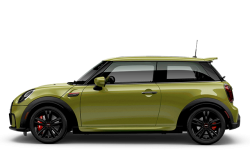The Definitive Guide to Buying a Used Car
May 25 2022,

Buying a car isn’t easy. Features and benefits stare at you like shiny diamonds. What are you looking for? What can you afford? Should you get an electric vehicle? Or perhaps a hybrid.
The options are seemingly endless and new technologies expand with every model year. Where once we had mirrors, cars now look for you. Afraid your response time is slow? Let the cars take care of that. Depending on what you need, a used vehicle may actually be a better buy for you. Steering assist may be a neat feature to talk about, but you may never get used to it. And if you don’t listen to the radio or podcasts, why would you need an 11” infotainment screen?
Here are six things that the experts consider when evaluating a used vehicle:
1. What are you looking for in a vehicle?
The best way to buy a used car is to first determine what you need from a car. If you need something for a long commute, then a sedan is a good option. If you want something for a family, then an SUV or minivan might be best.
Second, conduct research on the make and model of cars that peak your interest. Read reviews, compare prices, and become an expert on the features that are offered by each brand. Once you've completed your research, it will be easier for you to come up with a decision about which vehicle is the best fit for your lifestyle.
What the experts say: Sometimes you can check out earlier models of new cars that you like to find the right fit.
2. Check for hold on property
Check for any holds or liens on the vehicle before purchasing it. Previous owners may be liable for purchase or repairs of the car in some scenarios. If you purchase a car with a mechanic’s lien or finance contract, you will be held liable. You should check with an Alberta Registry Agent to see if there are any property holds. Please keep in mind that you must submit the Alberta Registry Agent with your Vehicle Identification Number (VIN).
3. Check the VIN
Always double-check that the VIN on the dashboard matches the VIN on the vehicle registration form!
4. Inspect the Interiors & Exteriors of the Car
It is best to inspect the interiors and exteriors of the vehicle in broad daylight for signs of excessive wear.
Interiors
Examine the accelerator pedals, steering wheel, the infotainment screen, all buttons, and make sure everything is working as it should. Ensure the windows go up and down, ensure the sunroof retracts and closes properly, if the vehicle has remote start or park assist test that as well. Don’t forget about seatbelts and other safety features as well. Request receipts from the seller to verify purchase if the seats and stereo system are not from the same manufacturer as the car.
Exterior
While inspecting the exterior of the car, make sure to thoroughly assess the condition of the tires. Remember to keep a spare tire, jack, and wrench in the trunk. Inspect the shock absorbers of the car by pressing down on each corner. It should be able to come to rest shortly. Another thing to check for is the underside of vehicle. Was the car weather proofed? Has it been 3M’d or does it have ceramic coating?
Under the hood
It bears mentioning that you should pop the hood. Look for major replacements like starters, alternators, and batteries. While some are wear parts, early replacements may be a sign of poor maintenance. Another thing to look for is moisture damage on wiring, hoses and other exposed metals.
5. Check the Car’s CARFAX records for any accidents
Examine the car for dents, rust, and evidence of recent bodywork. If the car has been in an accident, request a written account of the incident. At the time of sale, be sure the car's warranty is in writing. The warranty should explicitly explain what is covered, information about the supplier, and whether or not it includes car parts and labour. If the warranty states that it covers "all major components," make sure you confirm what that means.
6. Test Drive
Take the car for a spin! During the test drive, look for any indicators of a delay in starting. Check that the engine gauges and warning lights are operational. Is the steering wheel rigid? Are any squeals present? Test the car's brakes.
Drive the car at varying speeds on varied road conditions to gain a better grasp of the car's performance - steering, brakes, shock absorbers, and car alignment. If you lose control of your car at different speeds or have a bumpy ride, this signals major steering issues and excessive damage to the shock absorbers.


